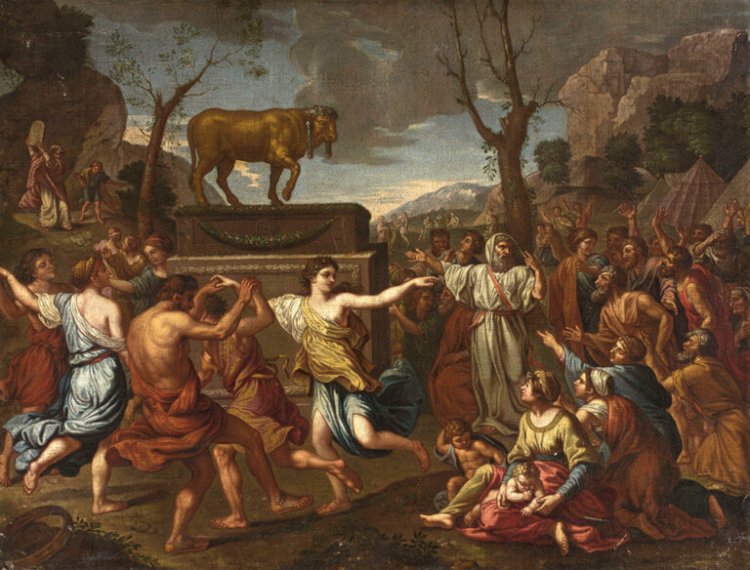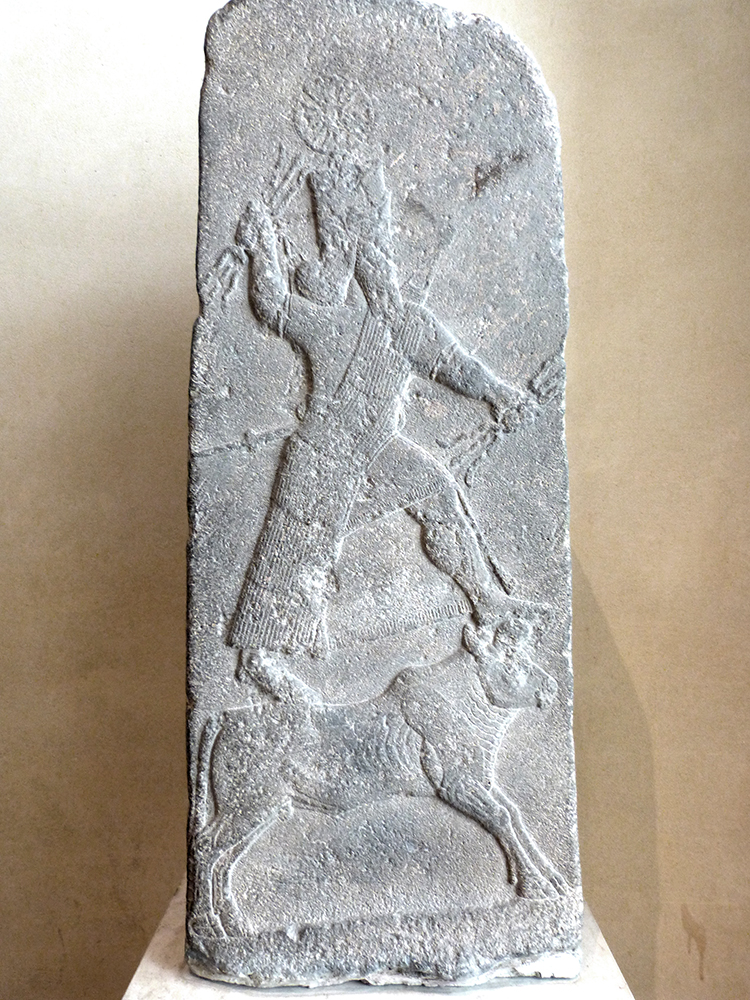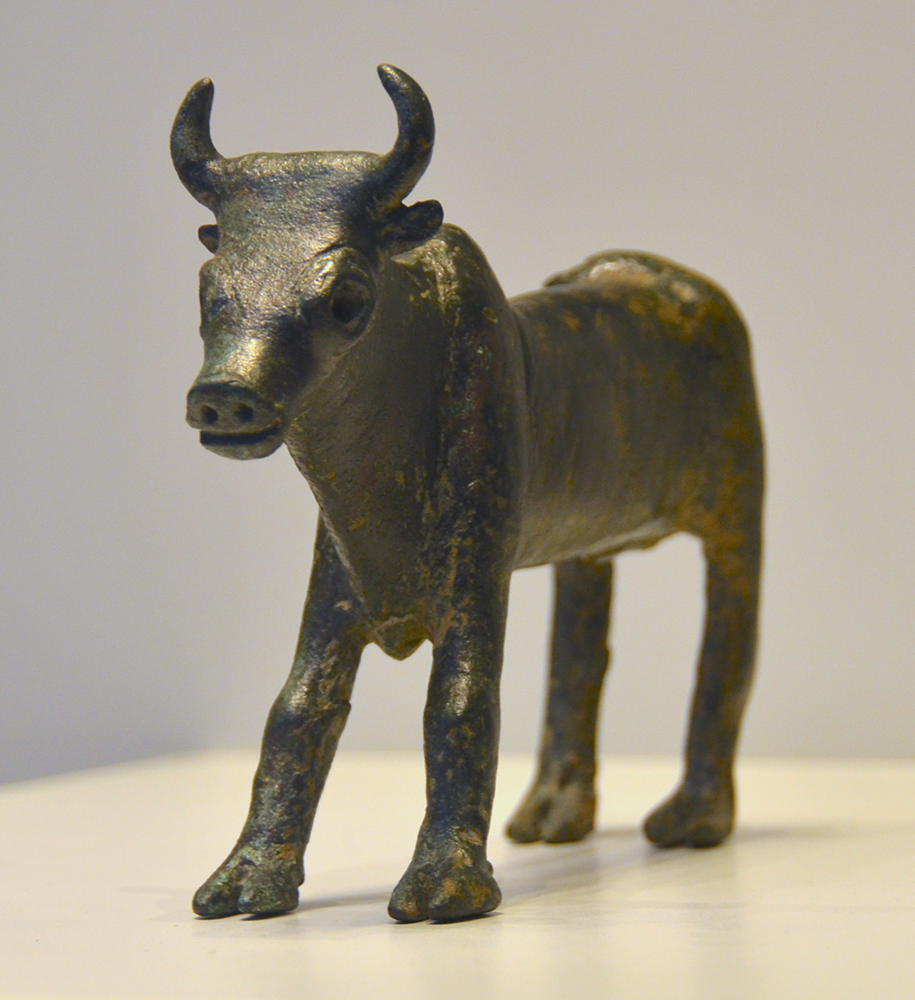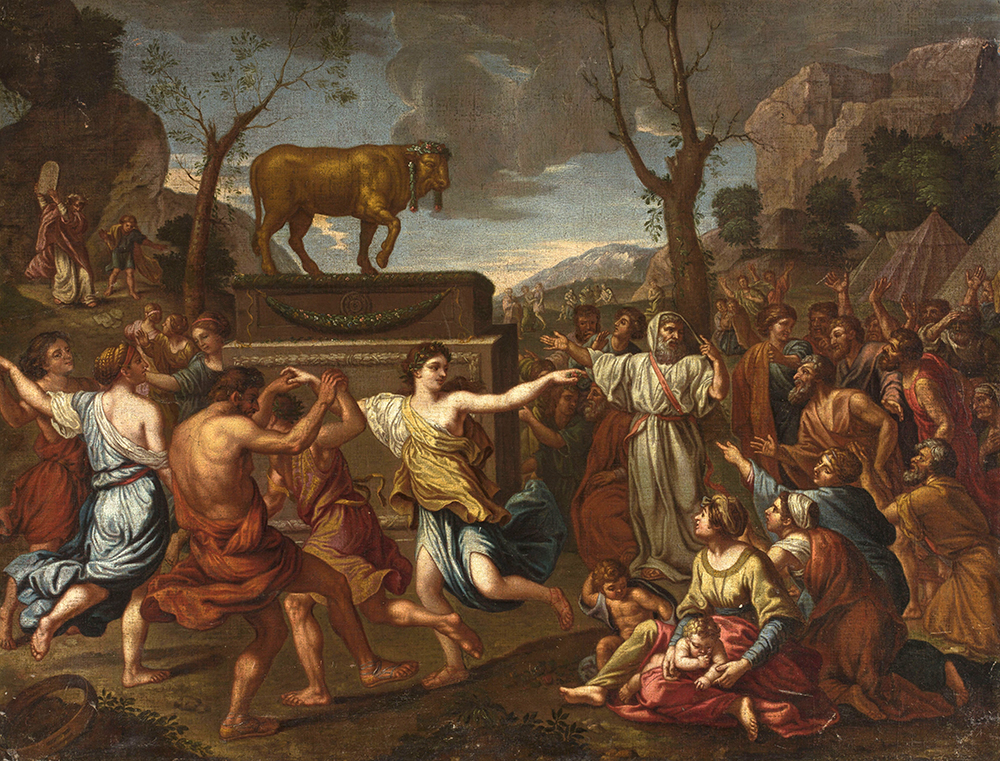Why Did the Israelites Make a Golden Calf?

Why did the Israelites make a golden calf? It’s a question that has puzzled readers of the biblical Book of Exodus for millennia.
As Exodus tells us, after Yahweh is victorious over the gods and armies of Egypt and delivers the Israelites from slavery, he brings them to Mt. Sinai to initiate a covenant. The covenant process is initiated by a theophany in which God himself descends upon the trembling mountain in fire and smoke. Before this happens, however, the people are given three days to consecrate themselves and prepare for the divine experience, lest they perish. Once God descends in his fiery magnificence, he speaks the famous Ten Commandments to the gathered Israelites. The experience is so terrifying that the people no longer want to hear the voice of God and plead with Moses to talk to God on their behalf. Moses complies and the laws of the covenant that began with the Ten Commandments continue.
The final portion of the covenantal promise has a particularly militaristic air to it, in which God promises to send an angel to act as a divine general that will bring the Israelites a victory over their enemies. Moses writes all the stipulations of the covenant down and then returns to read everything to the people, who agree fully to God’s terms and make the proper blood sacrifices. The ceremony is finalized with a sacrificial meal eaten by Aaron, his sons, and the 70 elders. Afterwards, Moses leaves his brother and the elders to ascend to the mountain’s summit so he can receive the sacred documents written in stone. Terrifying fire and smoke cover the mountain again and Moses doesn’t return (Exodus 24:15–18).

he reader stays with Moses as God gives him instructions for the construction of the Tabernacle and other sacred items, including the Ark of the Covenant. Meanwhile, the Israelites have no idea what has been going on over the past 40 days while God’s terrifying presence has been consuming the mountain. Having been told from the beginning how dangerous the situation was, they naturally assumed that Moses had fallen afoul of God’s wrath and died. What follows is the infamous Golden Calf episode in which the people beg Aaron to make them a god to worship.
It is easy to read this story and pass judgment on the faithless Israelites who quickly fall into idolatry after having just promised not to do so. Although a grievous covenantal transgression to be sure, it is also understandable. They had been promised a new land and that divine power would march before them and bring them victory over their enemies. After agreeing to the covenant, they are immediately left without leadership or answers. The man who had stood up to the mighty pharaoh and led them out of Egypt was seemingly dead. What were they to do? After generations of living in Goshen, they were now nomads, lost in the deserts of Sinai with no home to call their own. How could they achieve great victories and gain the lands that Yahweh had promised? They did what any people in that day would have done—they took matters into their own hands.
Thanks in large part to the famous scene in Cecil B. DeMille’s The Ten Commandments, we picture the Israelites fashioning their golden calf to look like many of the bovine idols known from Egypt—the Apis bull in particular. This depiction seems all the more likely considering that they had just spent many generations living among the Egyptians, with some Israelites perhaps even being employed as idol makers. Aaron seems to already have the knowledge of how to construct the golden calf when the people come to him with their request. We also aren’t told much about the religious beliefs of the Israelites during their years in Egypt. Many assume that they kept to the ancestral religion of the patriarchs, passing on the worship of the God of Abraham, Isaac, and Jacob, but it is just as likely that many engaged in the worship of Egyptian deities as well.
Another possible reason for choosing a calf to represent Israel’s God might not have anything to do with Egyptian religion at all. Across the ancient Near East, cultures represented deities standing atop bovines. Often the depicted god was the storm god par excellence, variously known as Adad/Hadad (Mesopotamia), Baal (Ugarit), Teshub (among the Hurrians), or Theispas (Urartu). Following the Canaanite tradition, in the Bible this deity is often simply called Baal (“Lord”) and has various local manifestations (i.e., Baal-Peor, Baal-Zebub, Baal-Berith, etc.). In all of these images, the bovine is meant to function as the seat or pedestal of the storm god. In some instances, the deity is even flanked by winged creatures that immediately call to mind the cherubim that sat atop the ark and decorated the Holy of Holies. Having not yet received their instructions from Moses, the Israelites may have fashioned the golden calf to serve the same function as the Ark of the Covenant—a sacred footstool upon which God was enthroned as they went to conquer the land. In later eras, Jeroboam’s golden calves would also be fashioned in direct competition with the Ark of the Covenant in Jerusalem, likely serving the same purpose as Yahweh’s footstool.

Stela from the site of Arslan Tash in northern Syria that depicts the storm god Adad astride a bull. Reign of Tiglath-Pileser III (744–727 BCE). Credit: John G. Drummond.
Baal iconography would have been very familiar to the Israelites, even during the time of their Egyptian sojourn. During the Middle Bronze Age (c. 2000–1550 BCE), Canaanites from the southern Levant took over Egypt and settled at their new capital of Avaris in the Nile Delta. From ancient texts, we know the Egyptians lamented that their new rulers did not worship Amun-Re but instead venerated Baal-Hazor, whom they identified with the Egyptian god Set. Until that point, Set was often considered a chaotic enemy of the gods but in the centuries following the Hyksos period, his image softened. Pharaohs of the 19th Dynasty, including Ramesses II and his father Seti I, even had a particular fondness for the deity. Regardless of when in time one places the Exodus, it is clear that the Hyksos introduced a form of Baal worship into Egypt, particularly in the region of the Nile Delta, and that the Israelites would have been familiar with Baal and perhaps even engaged in his worship. They might have even known of the connection between the Hyksos, their god, and the lands of Canaan—the very lands they were meant to conquer. With this in mind, deciding to fashion a golden calf to be used as the footstool of Yahweh seems like a natural conclusion. Their god should be worshiped in the manner of the powerful gods of Canaan.

Bronze bull discovered at the 12th-century BCE cult site of Dhahrat et-Tawileh in the West Bank. Credit: Nathaniel Ritmeyer/Creative Commons Attribution 4.0 International license.
Throughout the Hebrew Bible, the Israelites frequently struggle with Baal worship. The first instance occurs just after the 40 years of wandering while they are camped in the plains of Moab (Numbers 25). Apart from a few bright spots, the cycle of idolatry continues until the Babylonian Exile in the sixth century BCE. From the prophets, we can even see that the people sometimes considered Baal and Yahweh to be the same deity (Hosea 2:16–17). Could this struggle have existed from the very beginning, even before the events of Sinai? Like the Hyksos, could some of the early Israelites have been worshiping Baal alongside the God of Abraham, Isaac, and Jacob, or did they perhaps equate the two? Considering the golden calf episode, it certainly seems plausible.
What's Your Reaction?














